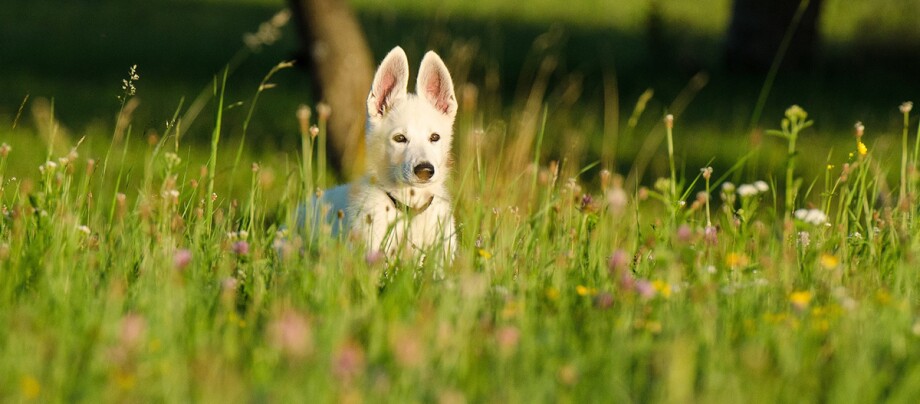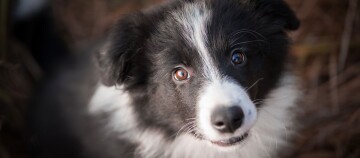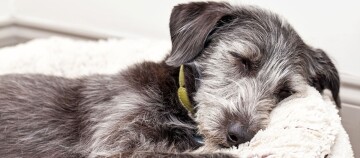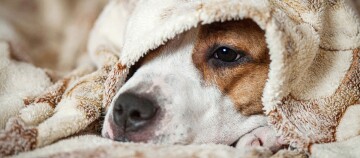Recognize House and Garden Plants That May Be Poisonous to Puppies
07.10.2022 - Reading time: 4 minutes

Most puppy owners can tell you a thing or two about it: puppies tend to try out everything possible by simply putting everything they are not familiar with in their mouth. Responsible dog owners therefore have already cleared everything out of the “range of puppies” in their apartment that could harm the puppy. Frequently, however, plants are forgotten in this. There are many houseplants as well as flowers and shrubs that beautify the garden and that are poisonous.
Poisonous house plants
Ideally, put the houseplants high up – on shelves and windowsills so that the puppy cannot reach them. The poisonous plants that many people have in their apartments include tulips, daffodils, crocuses, hyacinths, oleanders, philodendrons, dieffenbachia, ficus, anthurium, croton, Christ’s plant, potted fern, azaleas, cyclamens and also the poisonous poinsettia.
Harmful plants in the garden
Outdoors too, you should also be alert. In the spring, it is particularly the pretty bulb plants crocus, tulip, hyacinth and daffodil, primrose, squill and cowslip that you need to keep your puppy away from. But also shrubs and bushes invite your puppy to nibble them because puppy teeth want to be tried out. For example, yew, laburnum and wisteria contain strong toxins that can become dangerous for your pet.
Ideally, you do not leave your puppy alone unattended in the garden in the beginning and you spend a lot of time playing with it. Because a tired puppy will definitely not get the idea to want to redesign the garden.
There is not only the risk of danger for dogs in the garden in the spring. Elder, for instance, is poisonous and should also not be used as a stick to throw for your dog. Laburnum, lilac, hortensia, angel’s trumpet, oleander, ivy, mountain ash and holly can also cause poisoning in dogs.
Ideally, you should do without chemicals such as weedkillers or slug pellets entirely. The compost pile should also be set up so that the dog cannot reach it.
Check what is poisonous
Those who want to know whether there are poisonous plants in their garden or on their balcony can find out on the Internet. The universities of Bonn and Zurich have set up detailed veterinary pages. There you can find a complete list of all poisonous plants, the poisoning of symptoms and the first-aid measures.
When your puppy nibbles at plants
You can recognise that your puppy has tried out the poisonous plant from the following symptoms: apathy, vomiting and/or diarrhoea can be signs of a poisoning and the puppy should be taken to the vet immediately. Take samples of the vomit or faeces and of the plant that the puppy has eaten so that the vet can identify the toxin faster. Under no circumstances should you give your puppy milk to drink because this can accelerate the absorption of toxins into the body.
Alternative: chew toy
Prevention is of course ideal so that poisoning does not occur. A good method of ensuring that the pupppy does not nibble at anything that it shouldn’t is to provide it with sufficient chew toys. It can chew these entirely “legally” and will not look for a substitute in the apartment or in the garden. This is also particularly important with young dogs.
Education is the best “countermeasure”
When it is a puppy, you should already teach your dog through games that the vegetable patch is not a place to dig and flowers are not intended to be plucked by little dog mouths. A good education is now the best protection – also against poisonous plants. If your puppy starts to nibble at things, you can deter it from this with a resolute “No” or “Stop” and also with a little clap of your hands. Then call it over to you – and if it obediently comes over to you, you can reward it with a treat.


